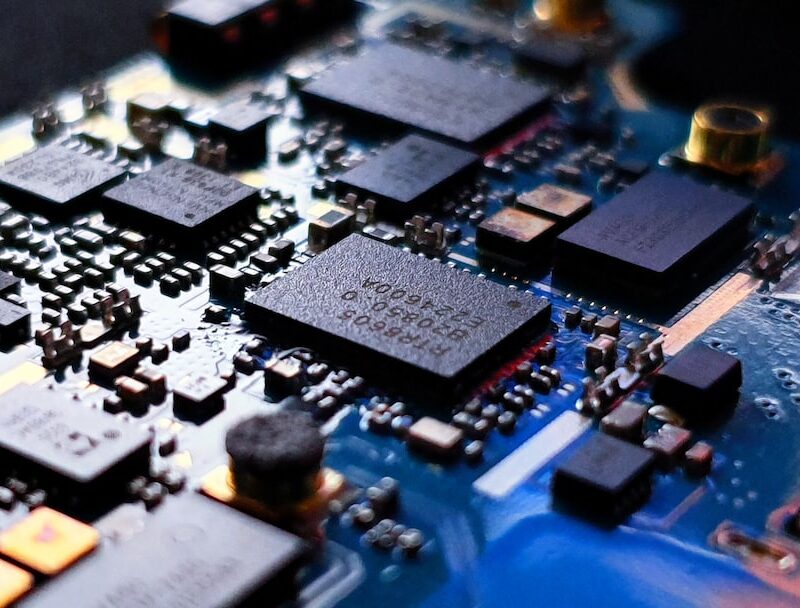All electronic components, including circuitry, produce too much heat, which can damage them or reduce their performance. Maintaining optimized temperatures is crucial to the continued success of many applications, including medical, aerospace, and mobility systems. Thermal management solutions provide ways to keep electronics within their thermal design limits. This five-part educational series explores the different methods of cooling that engineers use to meet these needs.
Conduction
All electronic devices generate heat, and excessive temperature can lead to device malfunction or failure. It is why thermal management is an integral part of any system that contains sensitive electronics. Engineers use various tools and thermal management technologies to protect circuits, chips, batteries and other electronics from major temperature-related threats. Integrated thermal solutions are found in products. Thermal energy can be transferred from heated to cooler items through direct touch through conduction. In electronic cooling applications, this is accomplished by using passive heat sinks or active coolers to dissipate the generated heat from a device. Typically, the thermal energy is transferred through a metal material that can conduct heat faster than the cooled component, such as copper or aluminum. Adding a TIM, or thermal interface material, helps to improve the efficiency of this method. The goal of any cooling solution is to move and remove as much heat as possible from a device. While it would be great to achieve 100% efficiency — and technology is getting closer to that point every day – the fact remains that all electronics generate some internal heat. Maintaining optimal temperatures for the specific device and its intended application is a key aspect of any effective thermal management strategy.
Convection
Many devices and circuitry generate heat while working, which is fine in small doses. However, if the temperature rises too high, it can cause internal damage that decreases performance, reliability and lifespan. It can also waste energy. That’s why it’s important to find thermal management solutions to keep these devices within their temperature thresholds. A good way to do this is with cooling systems. These are used in various applications, from electric vehicles to industrial controls. They use fans and other technologies to move air across the components of a device, cooling them down as it passes through it. It is sometimes combined with other methods of transferring and dissipating heat, such as conduction.
It’s also possible to reduce heat generation by designing a device with lower thermal resistance. For example, it’s possible to improve heat transfer and avoid overheating by using materials with higher thermal conductivity and creating a thermal interface material that is placed between the machine and its heat sink. While it’s impossible to eliminate all heat, designing a product or system with the best temperature management in mind from its inception is possible. It will help protect sensitive electronic components from major heat-related threats like overheating and ultimately increase their performance, longevity, efficiency and safety.
Radiation
As electronic systems become denser, they generate more heat and require a more effective means of keeping them cool. High temperatures can damage components, shortening their lifespan and impacting the performance of a system as a whole. Therefore, thermal management is an essential design consideration for all electronic systems and must be considered in the early stages of a project to avoid expensive and time-consuming redesigns. A cooling interface is one of the primary ways to manage a device’s temperature. It may be accomplished through potting or encapsulation, liquid gap fillers, or coatings. Silicone is a popular choice for these materials, particularly when combined with high-performance polymer compounds to provide wearability/stretchability and electrical insulation.
Active tools that move and dissipate heat include fans, pumps, and thermoelectric coolers. They require an external power source but are typically cheaper than passive cooling tools.
Many military and aerospace applications rely on thermal management to keep sensitive technology at the optimal temperature for reliable operation. These technologies must be effective and compact because they often must be carried by launch vehicles or housed in limited space on aircraft, spacecraft, or satellites. Every gram of weight is costly, and the ideal thermal management system for demanding aerospace or military applications will be light and small.
Temperature Sensors
Temperature sensors measure temperature via electrical signals and provide readable readings. They are essential in industrial settings for monitoring machinery and equipment. They are also commonly used for medical applications and scientific or laboratory purposes. Depending on how they connect to the device they are watching, they can be categorized as either contact or non-contact. Thermistors and thermocouples are examples of contact temperature sensors, while thermistors, RTDs and semiconductor-based temperature sensors are examples of non-contact temperature sensors. Thermistors are a simple type of temperature sensor and function by changing their resistance whenever the ambient temperature changes. They can be used for basic temperature measurements and are commonly found in household appliances like microwaves, ovens or kettles. They are also used in automotive vehicles and power plants for measuring exhaust gas, engine oil, or radiator temperature. Thermocouples are a type of temperature sensor that works by creating an electrical current whenever they encounter heat. They are the most common temperature sensor and can be used for various applications due to their versatility, accuracy, reliability and cost-effectiveness. These sensors are often used in hazardous environments like nuclear and thermal power plants and geotechnical applications to monitor groundwater migration or seepage. They are also critical to renewable energy sources such as wind turbines and biomass combustion applications.







